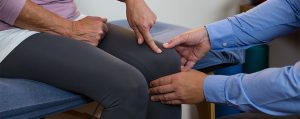Revisiting Your New Year Resolutions (Without a Gym Membership)
The start of a new year often inspires resolutions, with many Americans setting goals to improve their lives. While many focus on getting in shape or becoming healthier, it’s not uncommon for motivation to waver as January progresses. But don’t worry – late January is the perfect time to reassess and reset your intentions for the year. If you’re looking for ways to kick off 2025 on a positive note without relying on gym membership, here are five ideas to incorporate into your routine.
Is Being Pain-Free Part Of Your Goals? Here’s How Physical Therapy Can Help You Feel Your Best
There’s no better time than now to start those goals you have set for yourself. This includes taking care of aches and pains you may be having. Pain may be common, but it is not normal, and physical therapy may be able to help. Physical therapy can help with injuries, prevent falls, and enhance function with day-to-day activities and hobbies. If any of the above sounds like you, physical therapy could be your answer! Let’s take a closer look how physical therapy can help.
What Are Exercise Snacks And Should You Be Doing Them?
I know what you are thinking, and no, this article is not about protein bars and shakes or even fruits and vegetables. The term “exercise snacks” has grown in popularity in recent years, and in this blog, we’ll take a closer look at exactly what this term means and break down its benefits. Here’s what you need to know!
5 Tips To Help You Get In Touch with Your Most Active Self
In today’s fast-paced and hectic world, staying active and maintaining a healthy lifestyle can sometimes feel like a challenge. However, by tapping into your most active self, you can unlock your full potential and lead a more energetic and fulfilling life. Whether you’re looking to kick-start a new fitness routine or revitalize your existing one, these five tips will help you reconnect with your most active self and embrace a lifestyle of vitality.
Protecting Your Knees Throughout All Stages of Life
The knees are a common area for injury and pain, with incidences occurring in roughly one-fifth of the population, and this is only second behind back pain. Because of this, it is common to hear someone you know talk about their “bad knees” at some point or another, especially in the older population. While knee pain can be common, it is also fairly easy to take care of to keep pain at bay and it is best to start working on them as early as possible.
The following information will help you get in touch with your knees and keep them as pain-free as possible as you age.
Motion Is Lotion: How To Stay Moving When Living With Osteoarthritis
Arthritis affects 24% of American adults, is the leading cause of work disability1, and accounts for approximately $303 billion of the $4.1 trillion yearly healthcare cost. With 21% of the population estimated to be 65+ by 2030, arthritis management will be an increasingly prevalent topic.
While exercise is one of the best treatments for arthritis, inevitably, the question arises of how to keep moving when living with arthritis. The answer begins with understanding that exercise is not the enemy.
Tips for Better Ergonomics at Work
Every job presents its own set of physical and mental challenges. However, no matter what demands our ergonomics or how we use our bodies while interacting with our work environments and surroundings, it affects how we feel during and after the day. It can be helpful to think of our bodies as tools with specific jobs and purposes and should be used as efficiently as possible to prevent injury and pain.
Thinking about ergonomics from a few fundamental themes can help keep safety and efficiency at the forefront of our minds. Themes such as posture, positioning, and performance are married to ergonomics, and if we think of these ideas proactively, we can stay safe while at work.
Return to Sport vs. Return to Work
The American Physical Therapy Association describes Physical Therapists as “movement experts who improve quality of life through prescribed exercise, hands-on care, and patient education.” As physical therapists, with our patient’s help, we shape their goals around what improves their specific quality of life. Often, we picture athletes returning to sports or patients relearning how to walk. Less commonly, we think about the importance of injured workers returning to their jobs without limitations. It’s easy to understand why the rehabilitation process for return to sport is so intense and personalized for a patient. The rehabilitation process for return to work should be just as intense and personalized to assist the employee in reaching their goals.
